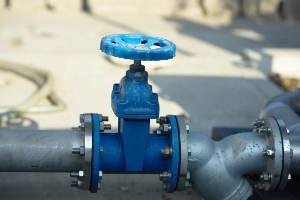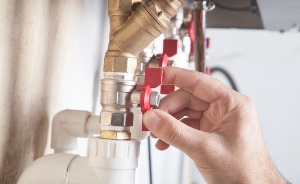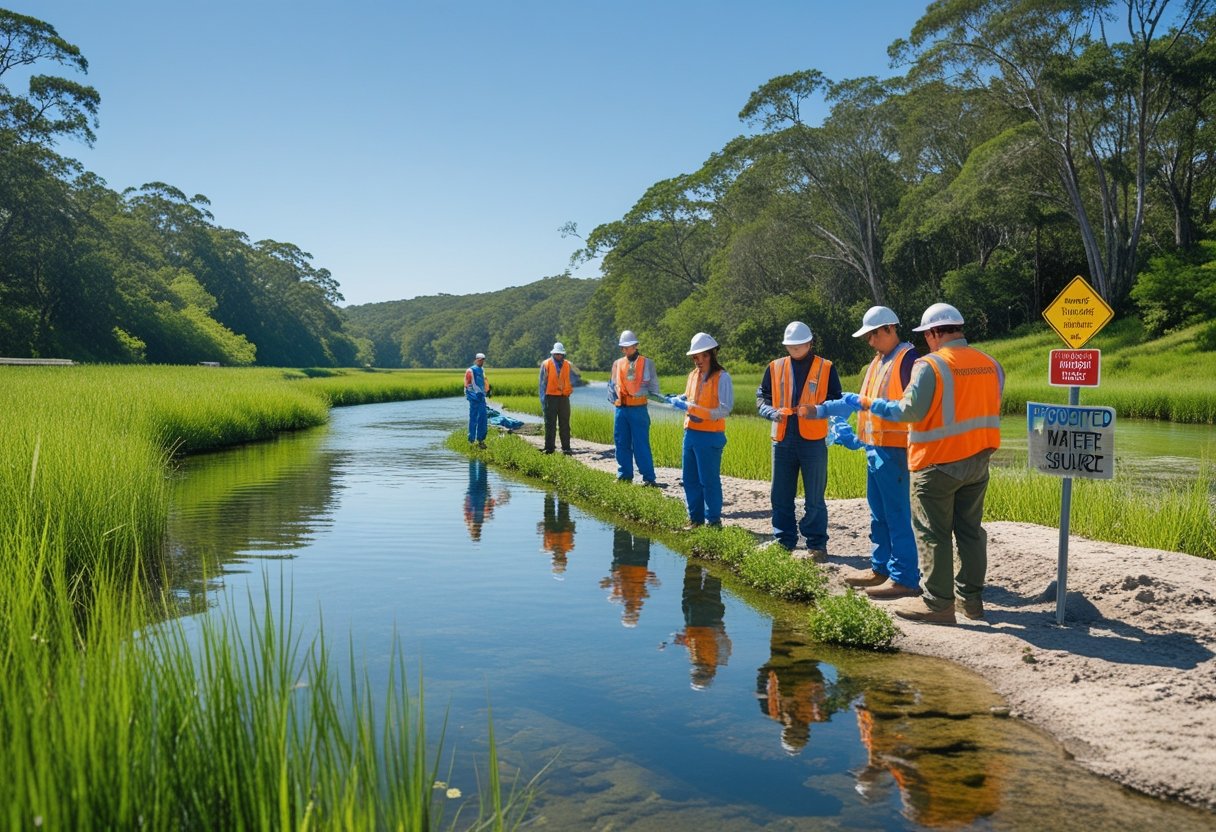An anti-siphon valve is a critical device in plumbing systems that prevents contaminated water from flowing back into clean water supplies. This valve acts as a safeguard, ensuring the safety and purity of your water by blocking backflow, which could introduce pollutants into drinking water sources.
Understanding the function and importance of an anti-siphon valve can help you maintain a healthy water supply in your home or business. If you're in San Diego County, ensuring your backflow prevention systems are functioning properly is essential, and that's where Pacific Backflow comes in. With nearly fifty years of experience, this company offers reliable and responsive backflow testing, ensuring your water supply remains protected.
Regular maintenance of these valves is not just a matter of compliance; it's about protecting your community’s health. Whether you need testing, repairs, or installations, knowing the role of an anti-siphon valve is the first step in ensuring safe water for you and your neighbors.
What Is an Anti-Siphon Valve?
An anti-siphon valve is a crucial component in plumbing systems, specifically designed to protect clean water supplies from contamination. This section covers its definition, historical context, and key components to enhance your understanding.
Definition and Core Purpose
An anti-siphon valve is designed to prevent the backflow of contaminated water into the clean water supply. During a siphoning effect, water can flow back into the potable system, introducing harmful pollutants. These valves are typically installed on outdoor faucets, irrigation systems, and in various industrial applications. By using a combination of air vents and check mechanisms, an anti-siphon valve interrupts this flow, maintaining the integrity of the water supply. This means it’s essential for both residential and commercial properties to have functioning anti-siphon valves for effective backflow prevention.
Origins and Historical Significance
The concept of backflow prevention can be traced back to the early 20th century when public health concerns became more prominent. Contaminated water, if allowed to flow back into clean supplies, posed significant health risks. The introduction of anti-siphon devices was, therefore, a significant advancement. Over time, plumbing codes evolved to include strict regulations regarding these devices. Today, most local codes require anti-siphon valves to be installed in residential and commercial plumbing systems, reflecting their critical role in safeguarding public health.
Key Components
Anti-siphon valves consist of several essential components that work together to ensure effective operation:
- Check Valve: This prevents water from flowing back into the source.
- Air Vent: It breaks the vacuum that allows siphoning to occur.
- Spring Mechanism: This component helps maintain the seal when water pressure is not applied.
These parts must function correctly to ensure that contaminated water does not compromise your clean water supply. Regular maintenance and inspection of these components are necessary to prevent any potential failure. If you need assistance, consider contacting Pacific Backflow, a reliable provider in San Diego County, to ensure your systems are performing optimally.
How Anti-Siphon Valves Work
Anti-siphon valves are essential for maintaining the safety of your water supply by preventing the reverse flow of water. Their design incorporates mechanisms that ensure water only flows in the intended direction, protecting against contamination. This section elaborates on how these valves function through various mechanisms.
Preventing the Siphon Effect
The siphon effect occurs when water flows backward, often due to a drop in pressure in the supply line. An anti-siphon valve prevents this by creating a seal that obstructs backflow. When water pressure drops, the valve closes, stopping any potential contamination. This is crucial for irrigation systems, where mixing clean water with contaminated water could pose health risks. Regular maintenance of these valves ensures they remain effective, and services like those offered by Pacific Backflow can help monitor their functionality.
Siphon Break and Vacuum Breakers
Siphon breaks and vacuum breakers are important components of anti-siphon valves. A siphon break allows air to enter the system, breaking the vacuum that could lead to siphoning. This mechanism is particularly useful in situations where water might otherwise be pulled back into the supply line due to differences in pressure. Vacuum breakers work similarly, using a spring-loaded mechanism to allow air into the line, preventing backflow. Both devices contribute to ensuring compliance with health regulations, safeguarding your water supply's integrity.
Diaphragm and Duckbill Valve Mechanism
The diaphragm valve utilizes a flexible membrane that reacts to water pressure, allowing flow in one direction while blocking reverse flow. This intricate design is sensitive to changes in pressure, providing reliable backflow prevention. Duckbill valves work on a similar principle, often found in drainage and venting applications. Their unique shape allows them to open with forward pressure while closing tightly to prevent siphoning. Both mechanisms are critical in maintaining the operational efficiency of plumbing systems. Reliable installation and regular inspection are vital for optimal performance, services that Pacific Backflow specializes in.
Applications of Anti-Siphon Valves
Anti-siphon valves are vital components that play significant roles in various plumbing and irrigation systems, ensuring the safety and quality of your water supply. They help prevent backflow, protecting potable water from contamination across several common applications.
Outdoor Faucets and Hose Bibs
When you use outdoor faucets or hose bibs, anti-siphon valves ensure that contaminants cannot enter your clean water supply. These valves are typically installed directly on the faucet or at the hose attachment point.
Benefits include:
- Protection from Contamination: By preventing backflow, they safeguard against pollutants when water pressure drops.
- Compliance: Many local codes require these valves to maintain safe and healthy drinking water.
Regular inspection and testing of these valves is crucial to ensure they function correctly and adhere to local regulations.
Irrigation and Sprinkler Systems
In irrigation systems, anti-siphon valves are essential for maintaining the integrity of potable water. They are particularly important when using chemicals or fertilizers in conjunction with your sprinkler systems.
Key advantages are:
- Contamination Prevention: They stop chemicals from backwashing into the main water supply.
- Efficient Water Use: By maintaining consistent water flow, they enhance the efficiency of your irrigation system.
Before starting any irrigation project, ensure your backflow prevention measures are in place, reinforcing the quality of your water supply.
Marine and Specialized Plumbing
In specialized applications, such as marine plumbing, anti-siphon valves protect fuel systems and freshwater supplies from contamination. Boats and marine vessels often face unique challenges.
Features include:
- Durability: Designed to withstand harsh environments, they offer reliable protection on the water.
- Safety Measures: They prevent siphoning of fuel or other hazardous substances back into the system.
For any marine installations, consider consulting a professional like Pacific Backflow to ensure compliance with safety standards and proper installation.
Installation, Maintenance, and Compliance
Understanding the procedures for installing, maintaining, and ensuring compliance with anti-siphon valves is essential for both homeowners and professionals. Adhering to proper practices not only protects your water supply but also ensures your system meets local plumbing codes.
Correct Installation Practices
When installing an anti-siphon valve, begin by selecting an appropriate location. The valve must be positioned at least 6 inches above the highest sprinkler head to ensure proper operation. Use tools like a pipe wrench and Teflon tape for secure fittings.
Following the manufacturer's instructions is crucial during installation. Ensure the valve is oriented correctly to allow water flow in one direction, preventing cross-contamination. If you require assistance, consider hiring a professional plumber to guarantee that your installation adheres to local standards.
Routine Inspection and Maintenance
Routine inspections are vital for the longevity of your anti-siphon valve. Check for signs of wear, corrosion, or leaks. A simple visual inspection can help detect issues before they become significant problems.
Performing maintenance, such as cleaning the valve and ensuring moving parts are functioning correctly, will help maintain efficiency. Regularly scheduled maintenance can prevent malfunctions, and working with a certified technician can ensure compliance with local regulations.
Pacific Backflow offers annual backflow testing to ensure your system is operational and meets all compliance requirements.
Meeting Plumbing Codes
Compliance with plumbing codes is mandatory. These codes are designed to guarantee the safety and efficiency of your water system. Each jurisdiction may have specific regulations surrounding the installation and maintenance of anti-siphon valves.
Familiarize yourself with the relevant plumbing codes in your area. Regular testing and timely repairs are essential components of staying compliant. Consult a professional, like those from Pacific Backflow, to ensure your installation meets all required standards, safeguarding your water supply effectively.
Common Issues and Troubleshooting
Understanding the common issues associated with anti-siphon valves can help you maintain your water supply and plumbing system. Identifying symptoms of failure, recognizing potential causes, and knowing how to repair or replace a valve are crucial for effective troubleshooting.
Typical Symptoms of Failure
You may notice several signs indicating that your anti-siphon valve is failing. Common symptoms include:
- Continuous water leakage from the valve itself.
- Reduced water pressure or flow, affecting fixtures throughout your home.
- Irregular or sputtering water flow, which can indicate blockages or diaphragm issues.
- Contaminated water that may appear discolored or carry an unusual odor.
Recognizing these symptoms early allows you to take action before the situation worsens. If you observe any of these issues, it may be time to consult a professional plumber for further evaluation.
Causes of Malfunction and Leaks
Several factors can contribute to the malfunction of an anti-siphon valve. Common causes include:
- Clogging due to debris or mineral buildup, which can obstruct proper flow.
- Worn out or damaged diaphragms, leading to leaks or irregular operation.
- Failed seals or gaskets, which can result in leaks that compromise water quality.
- Incorrect installation, which might cause improper function or premature failure.
Understanding these causes helps in diagnosing the issue accurately and in a timely manner. If leaks are present, addressing the problem quickly is essential to prevent further damage.
Repair and Replacement Tips
When dealing with a malfunctioning anti-siphon valve, consider these repair and replacement tips:
- Inspect for blockages: Use a soft brush to clean any debris from the valve.
- Check the diaphragm: If it's damaged, replacing it can restore function.
- Replace worn gaskets: This is a simple fix that can resolve leaks efficiently.
- Consult professionals: If you're unsure about repairs, contacting a service like Pacific Backflow ensures that repairs meet local standards and regulations.
Regular maintenance and timely repairs can prolong the life of your anti-siphon valve, preventing costly leaks and water contamination. For more comprehensive assistance, you might want to look into professional services for testing and installation of backflow prevention systems.
Frequently Asked Questions
This section addresses common queries about anti-siphon valves, providing clarity on their function, benefits, installation, and importance in plumbing systems.
How does an anti-siphon valve function?
An anti-siphon valve works by preventing backflow in a plumbing system. When water pressure is applied in one direction, it opens and allows water to flow. If there’s a drop in pressure or reverse flow, the valve seals shut, stopping any contaminated water from entering the clean water supply.
What are the benefits of installing an anti-siphon valve at home?
Installing an anti-siphon valve protects your drinking water from contamination. This is especially vital for outdoor faucets and irrigation systems where pollutants could enter. Additionally, it ensures compliance with local plumbing codes, enhancing your property's overall safety.
Can you explain the installation process for an anti-siphon valve?
The installation of an anti-siphon valve involves placing it in the plumbing line at an appropriate height above the ground. It's crucial to follow local regulations for proper placement. After securing the valve, ensure all connections are watertight to prevent leaks.
Why is an anti-siphon valve important for irrigation systems?
Anti-siphon valves are essential for irrigation systems as they prevent contaminated water from siphoning back into the main water supply. This is critical for maintaining water quality and protecting both health and the environment.
Where should an anti-siphon valve be placed in a plumbing system?
Typically, an anti-siphon valve should be installed above the highest point of the irrigation system and outside any building structures. This placement minimizes the risk of backflow and ensures proper functioning of the valve in reducing contamination.
What are the consequences of not using an anti-siphon valve on an outdoor faucet?
Without an anti-siphon valve, there’s a significant risk of contaminated water re-entering your clean water supply. This can lead to serious health hazards due to waterborne diseases and could result in costly repairs to your plumbing system. Protecting your water supply is crucial, and services like those offered by Pacific Backflow can assist in ensuring your systems are compliant and functioning properly.











